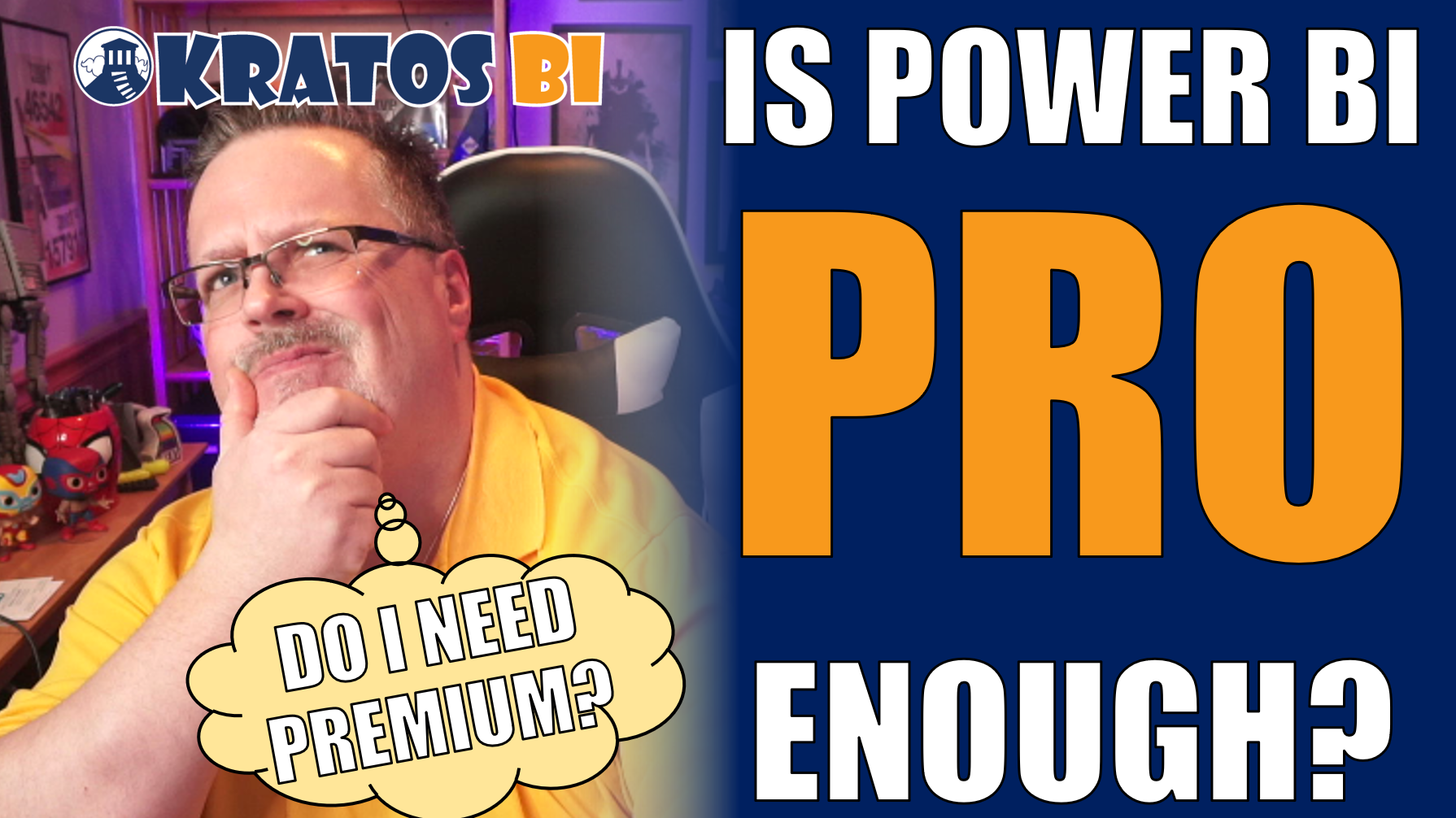Share
Is Power BI PRO Enough?
TOP 6 7 reasons why EVERY company should have Power BI Premium

With Power BI Pro becoming part of an Enterprise E5 license, it's become a common question- Is Power BI PRO Enough?
This is the answer I give to almost everyone.
You 100% can operate on just Power BI PRO. If you ONLY want Power BI to support Adhoc users, then PRO may be fine.
There will be some notable omissions that you may find very valuable. This is especially true if you are looking to have any enterprise-wide reporting and need to engineer the solution.
Every organization that is looking for more than Adhoc reporting needs to develop a Power BI Premium Strategy.
Premium Per User (PPU)
If you have fewer than 500 people in your organization, at a minimum you should consider Power BI Premium Per User (PPU) as the baseline licensing level for your company. This basically takes your licensing cost from $10 per month per user to $20. Power BI is still by far the least expensive and highest ROI of any BI tool. See the below features for WHY you should take this Jump.
Premium Capacities
If you have more than 500 people in your org, or you have a high demand for resources (it's possible to need dedicated capacity beyond the shared PPU capacity), at a minimum you should consider including at least one P1 ($5k per month- the break-even of PPU is 500 users). Depending upon your size, you will want to develop a strategy for how you Scale UP (going from P1 >> P2 >> P3 >> P4 >> P5) and how you Scale OUT (going to several P1s etc.). These strategies will be dependent upon your organization and budgetary needs. Connect with your Microsoft Sales team for walking through what will work best for your company.
Premium Capabilities
Below are the TOP 6 reasons why EVERY company should have Power BI Premium and NOT just Power BI Pro.
1. XMLA Endpoints- Model management and advanced API controls - This is the #1 item that in and of itself makes it worthwhile for Premium. The development and management time saved with XMLA endpoints for any of your larger models makes Premium a 'must have' for an organization.
2. Larger Models - A cap of 10GB total model sizes of PRO can be limiting.
3. Dataflows - Pro only has a light version of Dataflows. The full features you will want/need for Power BI management will need to include Dataflows for managing data INTO the service that's used by many ppl and have Premium compute.
4. Paginated Reports - You will have needs for detail level reporting that PBI is not designed to provide (anything more than 100k records) in an efficient manner. Paginated Reports allow you to write reports straight off the backend with no data limits.
5. Hybrid Tables - Hybrid Tables allow you to have both In-Memory data as well as a partition that is Direct Query to the backend. This allows for real-time feeds with the bulk of the data cached.
6. AI/ML Advanced Data Science Workloads without requiring a Data Scientist. This allows people to leverage the power of data science without having to get a Data Scientist.
7. Power BI Pipelines brings DevOps to the analytics world in a way that's easy to use, robust enough for most use cases, and starts the journey into hard core enterprise DevOps practices. Editor's Note: Thank you James Howell for pointing out this missed feature.

CHRIS WAGNER, MBA MVP
Analytics Architect, Mentor, Leader, and Visionary




